How to reset the thermal circuit breaker on a GE UPS?
- DDustin RiveraJul 30, 2025
If the Thermal Circuit Breaker (TCB) tripped on your GE UPS, it might be due to an overload. Try reducing the load and then reset the TCB.
How to reset the thermal circuit breaker on a GE UPS?
If the Thermal Circuit Breaker (TCB) tripped on your GE UPS, it might be due to an overload. Try reducing the load and then reset the TCB.
Why does my GE 600 - 1500 VA automatically switch off?
Your GE UPS might automatically switch off due to several reasons: * Overtemperature: Allow the UPS to cool down. * Mains failure: The battery may have discharged; wait until mains returns. * Programmed shutdown in progress. * Shutdown command: The UPS may have received a shutdown command from the computer during a mains failure. * Low Load: The load is less than 5% of the maximum load without mains power. Wait until mains returns.
What to do if LED 'on bypass' blinks on GE 600 - 1500 VA UPS?
If the 'on bypass' LED is blinking on your GE UPS, it likely indicates an overload or overtemperature. Reduce the load or allow the UPS to cool down.
Why won't my GE 600 - 1500 VA UPS switch on?
If your GE UPS won't switch on, consider these potential causes: * Check if the line cord is properly connected. * The wall socket outlet may be dead, or the mains voltage is out of limits; contact a qualified electrician. * The UPS may be overheated; allow it to cool down. * The Thermal Circuit Breaker may have tripped; refer to the instructions above.
What does it mean when the 'replace battery' LED is on for my GE UPS?
The 'replace battery' LED illuminating on your GE UPS (with a silent buzzer) could mean that a battery test occurred just after installation or a mains failure. Allow the UPS to recharge the batteries. It may also indicate that a battery test showed a weak battery.
General introduction to the NetPro 19" UPS and its purpose.
Essential safety guidelines for operating and handling the UPS.
Proper procedures for transporting and storing the UPS unit.
Rules and requirements to follow before installing the UPS.
Detailed instructions for physically installing the NetPro 19" UPS.
Procedures for starting the UPS with and without mains power.
How to operate the UPS under normal conditions and monitor load.
Understanding the various status lights and alarm signals from the UPS.
How to enter and use the setup mode for configuration.
Details on battery testing, charging, and management.
Using the RS232 port for advanced UPS communication with a computer.
Details on the optional relay interface card for alarm contacts.
Connecting the UPS to an Ethernet network via SNMP card.
Connecting external battery packs to extend UPS runtime.
Using the Service Box for remote diagnostics and alarms.
Basic maintenance for keeping the UPS in good condition.
Guidance on battery lifespan, testing, and replacement procedures.
| voltage amperes | 600 1000 1500 VA |
|---|---|
| watts with resistive load | 360 600 900 W |
| input thermal circuit breaker | 5 5 7 A |
| input fuse | 8 8 10 A |
| ac input voltage | 220 - 240 V |
|---|---|
| ac input voltage range at 100% load | 187 - 264 V |
| ac input voltage range at 70% load | 120 - 264 V |
| minimum start-up ac voltage | 187 V |
| input current at nominal input voltage | 2.0 3.3 5.0 A |
| input frequency range | 45 - 66 Hz |
| ac output voltage | 230 V |
|---|---|
| ac output voltage tolerance | ± 2% |
| output frequency | 50 or 60 Hz |
| output frequency range | nominal ± 0.15% |
| harmonic distortion | < 2% |
| ac input voltage range | 195 - 264 V |
|---|---|
| frequency tracking rate | 2 Hz/sec. |
| frequency tracking range | nominal ± 10% |
| phase difference | < 7º |
| typical transfer time | 4 msec |
| nominal voltage | 24 36 48 Vdc |
|---|---|
| number of 7 Ah batteries | 2 3 4 |
| recharge current | 1.5 A |
| battery recharge time for 90% capacity | 1.5 hours |
| runtime at typical load 75% | 12 12 10 minutes |
| ambient temperature | -10 to +40ºC |
|---|---|
| audible noise at 1 meter | < 45 dB(A) |
| max relative humidity | 95% |
| weight without battery drawer | 14 kg |
|---|---|
| weight with battery drawer | 19 22 24 kg |
| dimensions | 133.5 x 450 x 440 mm |
| depth required in 19” rack | 420 mm |
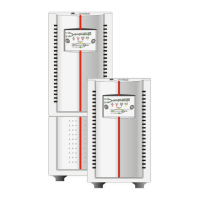
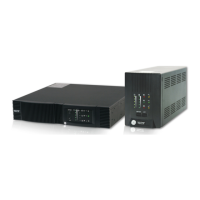


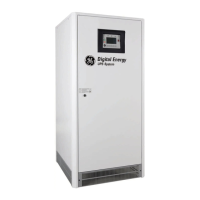
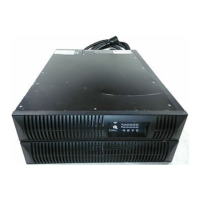

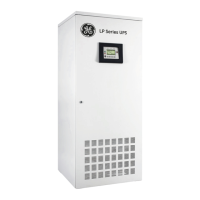
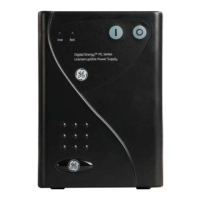
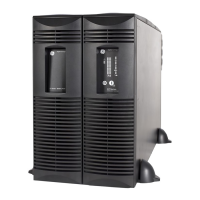
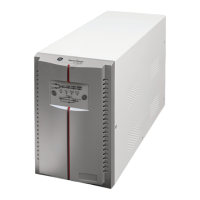

